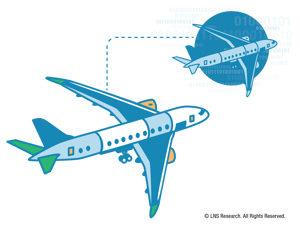Twenty years ago, businesses were facing a crisis with their IT systems; Y2K. Leading up to 1999 there was a new technology paradigm emerging regarding business IT, the shift from disjointed and independent business and accounting applications to a singular integrated application; ERP or enterprise resource planning. Initially, ERP was mostly just all the accounting functions packaged together with manufacturing resource planning applications (MRP II), but ERP quickly expanded to include human resources (HR), supply chain management (SCM), customer relationship management (CRM), product data management (PDM) and a variety of other functionalities.
Click here to speak with Dan Miklovic.
The dominant players, SAP, Oracle, Baan, Mapics and Intentia (now all part of Infor), IFS and many others all became the platform for integrated business operations for the front office and ultimately extended themselves to the shop floor in many industries. ERP, however, was closely associated with the IT function, although usually, the CFO was the lead advocate. Since accounting systems had always been based on data processing technology and data processing departments evolved to be known as IT, this was logical.
The technology crisis of 1999 was that the older generation accounting and data processing systems had used a two-digit year field and as January 1, 2000, approached the business logic was going to fail catastrophically as many calculations were going to result in negative or erroneous results. That technological crisis required businesses to either invest massive resources in rewriting existing outdated applications (which had challenges related to skills availability and other factors) or replace them with this new ERP platform. Most businesses opted to invest in ERP which has essentially become the business platform for industry.
 Twenty years later businesses are facing another Y2K moment, albeit one that does not have a fixed terminal point like 1/1/2000. Just as Y2K was identified as a critical challenge several years in advance, today’s business recognizes that digitally driven disruption to their operational technology (OT) poses a significant threat to their future. Moreover, just as in the case of Y2K, failure to address the challenge will ultimately result in a business’s demise. In some regards this challenge is more threatening than Y2K was since with Y2K there was a hard endpoint to work against but with Digital Transformation there is, for many companies, a lack of a sense of urgency and because of that uncertainty businesses are not acting fast enough. However, they are moving in many cases, upgrading systems and investing in digital technology to address the threats in their industries that they do recognize. The challenge for many of these companies is that they are opting to take a piecemeal approach choosing to upgrade only the OT elements they perceive as most problematic.
Twenty years later businesses are facing another Y2K moment, albeit one that does not have a fixed terminal point like 1/1/2000. Just as Y2K was identified as a critical challenge several years in advance, today’s business recognizes that digitally driven disruption to their operational technology (OT) poses a significant threat to their future. Moreover, just as in the case of Y2K, failure to address the challenge will ultimately result in a business’s demise. In some regards this challenge is more threatening than Y2K was since with Y2K there was a hard endpoint to work against but with Digital Transformation there is, for many companies, a lack of a sense of urgency and because of that uncertainty businesses are not acting fast enough. However, they are moving in many cases, upgrading systems and investing in digital technology to address the threats in their industries that they do recognize. The challenge for many of these companies is that they are opting to take a piecemeal approach choosing to upgrade only the OT elements they perceive as most problematic.
Businesses should look back at Y2K and how IT opted to address Y2K, by adopting the ERP model for their IT-based business systems. Today there is an opportunity to do the same thing for their OT, take a more integrated and systemic approach which I argue is to adopt the emerging concept of Digital Twins which are the OT equivalent of ERP these 20 years later. The challenge for many businesses is that their OT systems are fragmented with support and responsibility scattered throughout the business where with the financial systems the CFO had the ownership and charged IT with the support of those systems and ultimately the implementation of the new business platform - ERP. The COO now needs to step up the same way and start the evolution of the outdated and disparate OT systems to a platform based Digital Twin approach. Just as with ERP there will still be room for best-in-class point solutions, new capabilities introduced in breakthrough applications outside the platform and the potential for multi-vendor architectures, but at the core, the Digital Twin approach can do for OT what ERP did for IT.
Like ERP though, the investment will be substantial, and it will take years, sometimes as much as a decade, to get it all done and to work seamlessly. Savvy business leaders will recognize that Digital Twins have as much potential to change the way they do business as CFO’s understood how ERP did.